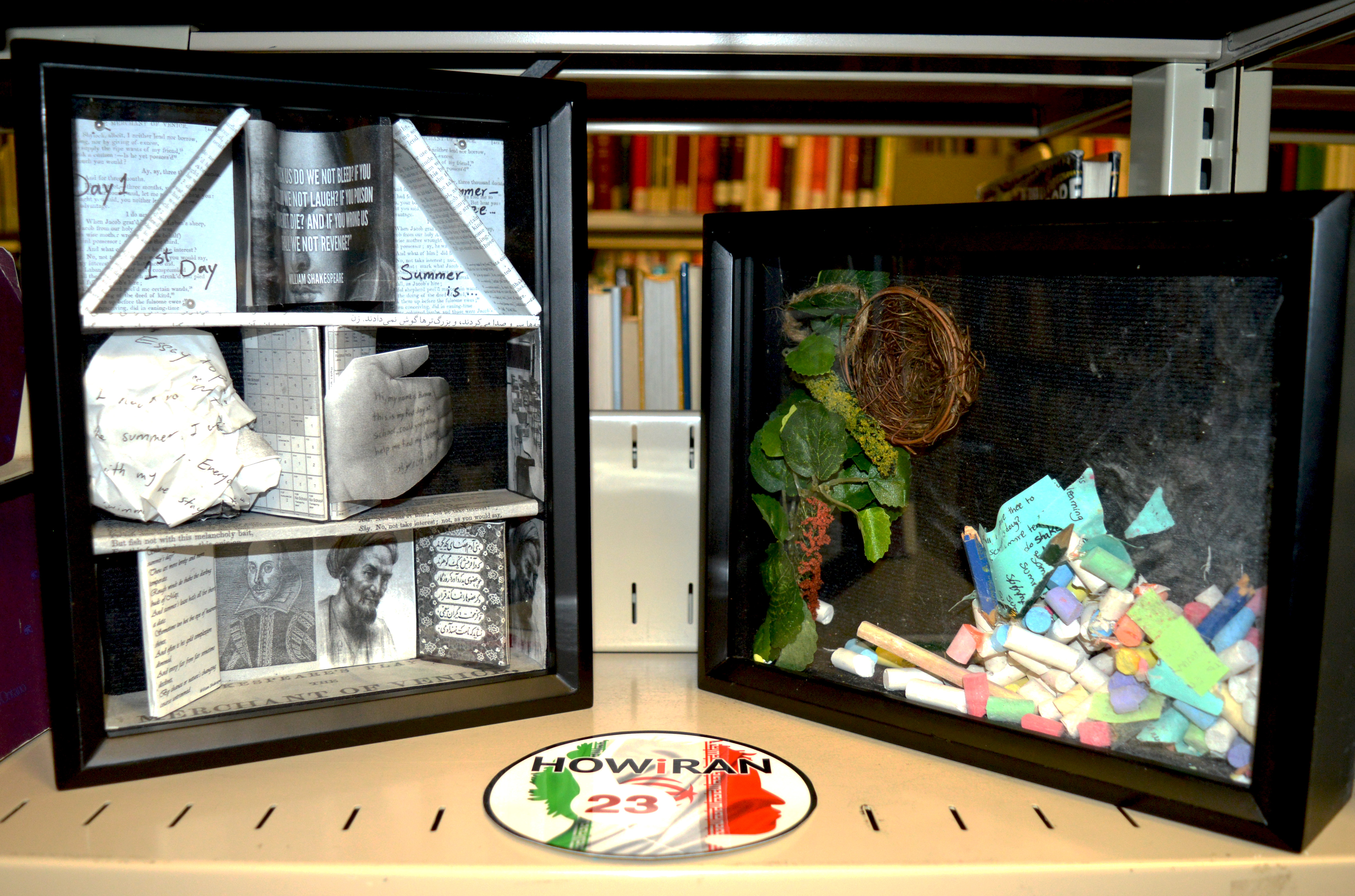Ottawa Fringe Festival partnered with the Ottawa Public Library (OPL) and Calgary-based theatre company Productive Obsession to bring a unique interactive theatre experience to Ottawa, presenting How iRan: Three Plays for iPod from Sept. 28 to Oct. 1 at the OPL Main Branch.
Written by Ken Cameron, How iRan is an interactive, non-linear story designed for iPods, that’s set in a library using art installations and public space to tell three interconnected stories set during the Iranian revolution and told over 30 years.
Each audience member is given an iPod and chooses a colour of the Iranian flag, which corresponds to one person’s story. The tracks are then put on shuffle, creating a unique narrative experience for each person as they wander the library from installation to installation.
How iRan follows the lives of Ramin, an Iranian immigrant who finds a job as a security guard at a library, Emily, a librarian who is Ramin’s co-worker, and Hossein, Ramin’s son who is a journalist.
Containing themes about issues of immigration, home, family, marriage, and illicit love, and set in Canada and Iran, How iRan tells the interconnected parts of Ramin, Emily, and Hossein’s lives and their relationships. All three characters’ lives intersect but audience members only get to hear one side of the story. Multiple scenes overlap between characters, but there are some events that only the character you’re following experiences.
After the performance, audience members then gather for How iRan: Act 2 to discuss the play with Cameron.
“This is a play that you can only experience individually by yourself with a set of headphones, but you only have part of the picture. So you can only understand the whole play by sharing it with one another,” Cameron said.
Cameron specifically designed How iRan for iPod, wanting to do so for fun but to also create a story that happened over a long time.
The three stories are fictionalized accounts based on interviews with 20 new Canadians, and one prisoner of conscience—imprisoned for their lifestyle or beliefs.
Cameron said he was largely inspired by Hossein Derakhshan, an Iranian-Canadian blogger who was imprisoned in Tehran from 2008 to 2014, and is credited with starting the Iranian blogging revolution. Cameron based a large part of Hossein’s adult life as a journalist on Derakhshan’s experiences.
How iRan ends on a cliffhanger, with Ramin receiving a telephone call from Hossein who’s been arrested. Cameron said that he chose to end the story that way because Derekhshan was still imprisoned when he was writing the play, and even though he’s since been released, the play represents people who are still imprisoned in Iran.
Daniel Waselnuk, one of the attendees, said he enjoyed How iRan so much he went three times to experience each side of the story.
“It’s like a puzzle with [only] one third of the puzzle,” he said. Waselnuk added he enjoyed each story separately, saying that they each stood on their own as a complete play.






